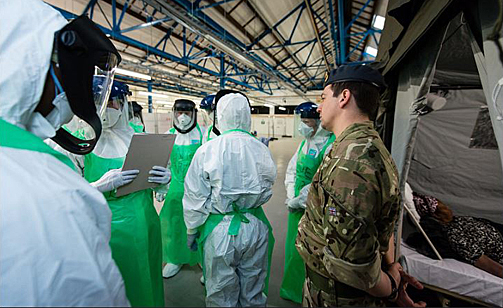Kinect-powered kiosk enlisted in fight against Ebola
Kinect’s gesture-enabled interactions can be entertaining (think games), profitable (think marketing), or educational (think kinesthetic learning). And sometimes, they can be potentially lifesaving!
Such was the case when the British Army asked CDS, a communications-solution company based in the UK, to create a touch-free interactive kiosk for use by possible Ebola victims. Part of a government-sponsored mission named Operation Gritrock, the kiosk will use video to provide critical information to people possibly infected by the deadly virus.
Recognizing that the Ebola outbreak in West Africa is already a global threat to public health, the UK is sending 800 army personnel to help combat its spread. The Kinect-enabled video kiosk will be an important part of this mission, as it will allow likely Ebola victims to learn about symptoms and care options without contaminating the kiosk equipment with their sweat or blood—body fluids that can harbor the Ebola organism.

British army medics train for deployment to West Africa, where they will fight the Ebola outbreak.
A Kinect-enabled patient kiosk will help them screen potential Ebola victims.
Having investigated the technological options, CDS selected the Microsoft Kinect for Windows v2 sensor to deliver a sensory, gesture-driven solution. This involved developing a customized Windows 8.1 application using the Kinect application program interface (API). The Microsoft UK Developer Experience team fully supported CDS on the development of the kiosk solution, which was slated to be field tested in January 2015.
Mike Collier, CDS technical director, said, “It is always gratifying to work on solutions that make a difference, and this project has certainly been a project to be proud of for all associated with it.”
The Kinect for Windows Team
Key links: